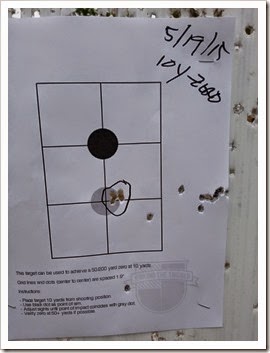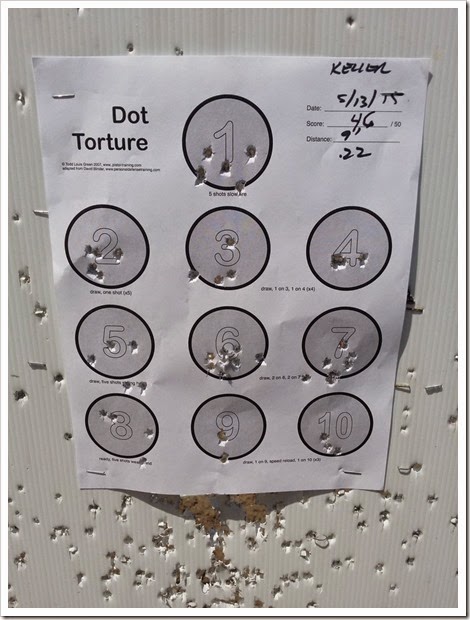Proficient: well advanced in an art, occupation, or branch of knowledge
There was a discussion among a group of trainers the other day regarding methods for determining if new officers were “proficient” with their firearms. It seems as though the focus became centered on their ability to shoot some type of defined “proficiency drill” with their service weapon.
My response revolved around the idea that this was a fairly limited POV and that there were other components to this particular concern as well. Knowledge of their service weapon. Ability to field-strip it, clean it and replace common components that could break (ejectors, firing pins, strikers, springs, etc). Ability to draw and engage a threat quickly and smoothly. And, finally some predefined type of shooting drill.
As is often the case with these types of “conversations” it got me to thinking . . .
As a defensive shooter, someone who had chosen to carry a defensive firearm daily . . .
Am I “proficient”?
All too often I see folks eager to get their carry permit (or whatever your particular state calls it) and they will do the minimum to fill the state requirement . . . and that’s it. It is all too likely that it includes very limited range time, little or no work drawing from concealment and a simple shooting test that demonstrates they can hit a piece of typing paper at 21 feet. And . . . honestly . . . I am OK with that, I am firmly in the “Constitutional Carry” side of the house. That said, I also believe that for a person who carries a defensive handgun as part of their daily routing there are oh so many more things they need to well and truly KNOW . . . that they are “Proficient” in. Let’s chat about that a bit.
Awareness: This topic is a bit of a rabbit hole depending on the instructor you chat with. The NRA preaches Unaware, Aware, Alert and Alarm . . . Cooper has White, Yellow, Orange and Red. The military adds Black to Cooper’s color code. What both are driving towards is a simple question . . . do you know what is going on around you? How about in general? How do things “feel” to you . . . in the country, your state, your county, your city or your neighborhood? As you walk down the street or slow for a traffic signal are you in your own little world subject to the whims of a predator or are you “aware” of your surroundings and paying attention to the things going on around you? Remember . . . the best way to win a gun fight is to not get in one. And your willingness to work on your level of awareness, to engage your surroundings rather than drift through them may well make the difference between seeing a threat and avoiding it or being yet another addition to some crime statistic.
Are you PROFICIENT in your ability to be aware of your surroundings?
Mindset: You’ve chosen to fill the squares to be able to legally carry a defensive handgun. Do you have a mindset that will allow you to actually use it to save your life, to work with it to be able to “run the gun” should things go sideways, to take a life if necessary, to dedicate a portion of your life monthly and annually to train on a range and take coursework in the use of your weapon? Are you serious . . . or playing at it . . .
Are you PROFICIENT in your ability to integrate a new mindset into your lifestyle?
Clothing: While the topic may strike some as odd, if you are going to enter the concealed carry world it will require a change in clothing for most folks. A sturdy gun belt is probably the most overlooked item. Pants a size larger to incorporate an IWB holster. Shirts/jackets that conceal. Sturdy shoes that allow rapid movement should the need arise. Clothing that still “fits in” and avoids the “shoot me first” signature.
Are you PROFICIENT in your concealment?
Gear: Have you selected a holster that fits your lifestyle and your gun? How about magazine carriers, belts, range gear including spare magazines, cleaning kits, range bags, eye protection, ear protection. Have you spent the time and done the research to insure you have equipment that works well together?
Are you PROFICIENT in the selection of your gear?
Your defensive handgun: Does your defensive handgun “fit”? Can you “run your gun”, clear malfunctions, shoot it well, maintain it including cleaning and the replacement of minor components? Do you have a reason you chose that particular handgun? Can you articulate it? Explain its advantages? How about your defensive ammunition? Why did you choose that caliber, that manufacturer, that particular round? Do you know its advantages? Can you articulate them?
Are you PROFICIENT in your knowledge of your handgun?
Can you shoot? : This skill will save your life. Can you draw and engage a threat quickly enough to give you a fighting chance to go home at the end of the day? While this seems to be the “go to” parameter when folks speak about “proficiency” – and it is vital – it is but a single component of the entire mix that is “proficiency” when applied to a defensive shooter. That said, can you draw/move, shoot, get combat effective hits, clear malfunctions and stay in the fight? Do you work at it? Do you set aside a couple hundred (minimum) rounds aside each month for your own personal training?
Are you PROFICIENT in your shooting skill set?
Do you take coursework and follow it up with individual training? Are you growing as a defensive shooter? To you travel to a trainer at least once a year for new coursework? Do your read, take DVD coursework, work with a training partner? Defensive shooting skills diminish over time unless you’re spending individual training time on the range keeping your skills sharp. Yep – it’s time consuming. Yep – it’s pricy. Yep – it can be frustrating. Yet, your life may well depend on your willingness to read, take coursework and hit the range.
Are you PROFICIENT in growing your shooting skills?
Can you keep the red stuff in your body? We are training with tools that can kill us. Have you taken a first aid course? Have you taken a trauma course? Do you carry a blowout kit ON YOUR PERSON when you’re on the range? Shoot yourself in your femoral artery you got about 3 minutes to live . . . unless you have the necessary skills to save your life or that of a training partner.
Are you PROFICIENT in the use of first aid and the equipment necessary to keep the red stuff in your body?
Have you taken some type of “after a shooting” training? If I put out the letters AOJP . . . do you have some idea what they mean? How about Ability, Opportunity, Jeopardy, Preclusion? Can you articulate a response to a possible shooting scenario? This is another field of study that needs your ongoing attention because winning the gunfight is only the first fight you will encounter. Our court system may well be just as dangerous to your life and freedoms and your threat was.
Are you PROFICIENT in defending your actions?
Proficiency – there is much more to that particular word than simply putting holes on a target. Demand excellence from yourself. Expect the best. Push yourself. Grow, learn, become better. Proficiency is not a static quantity. It demands ongoing work.
Start tomorrow . . . time’s a wasting . . .











































